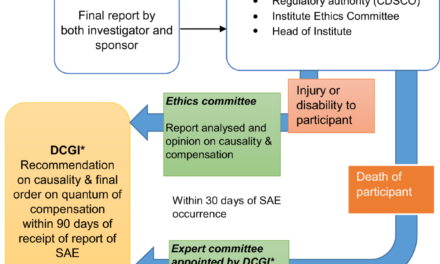
How India Can Become a Leader in Medical Device Innovation and Manufacturing

India’s growing medical device industry, currently valued at over $11 billion, has the potential to become a global leader in innovation and manufacturing. Leveraging its cost advantages, skilled workforce, and rising healthcare demands, India can establish itself as a hub for cutting-edge medical technologies. Here’s how the country can achieve leadership in this critical sector.
1. Current Position of India’s Medical Device Industry:
A. Market Snapshot:
- Global Share: Contributes about 1.5% to the $450 billion global medical device market.
- Growth Potential: Expected to grow at a CAGR of 15% to reach $50 billion by 2030.
- Major Segments: Diagnostic imaging, surgical instruments, disposable devices, and wearables.
B. Strengths:
- Cost Competitiveness: Produces high-quality devices at significantly lower costs compared to global peers.
- Rising Domestic Demand: Initiatives like Ayushman Bharat are driving the need for affordable and scalable healthcare solutions.
2. Challenges to Overcome:
A. Regulatory Barriers:
- Complex and evolving regulatory requirements delay product development and market entry.
- Lack of alignment with global standards like FDA and CE hinders exports.
B. Dependence on Imports:
- Over 70% of medical devices are imported, particularly high-value and advanced devices.
- Dependence on foreign raw materials and components increases costs and vulnerability to supply chain disruptions.
C. Limited R&D Investment:
- Indian companies spend less than 1% of their revenue on R&D, compared to 6-10% by global leaders.
D. Infrastructure Gaps:
- Inadequate testing and certification facilities lead to reliance on costly international labs.
- Limited access to advanced manufacturing technologies in smaller enterprises.
E. Talent Shortages:
- Lack of trained professionals in medical device design, manufacturing, and regulatory affairs.
3. Strategies to Establish Leadership in Innovation and Manufacturing:
A. Strengthening Domestic Manufacturing:
- Production Linked Incentive (PLI) Scheme:
- Expand the PLI scheme to incentivize the production of high-value devices like imaging systems and robotic surgery tools.
- Medical Device Parks:
- Fully operationalize parks in Tamil Nadu, Andhra Pradesh, Telangana, and Himachal Pradesh to reduce production costs and foster innovation.
B. Enhancing R&D Capabilities:
- R&D Incentives:
- Offer tax credits and grants to companies investing in R&D for advanced medical devices.
- Collaborative Research:
- Foster partnerships between industry, academia, and government research institutions.
- Establish Centers of Excellence for focused innovation in fields like AI-driven diagnostics and IoT-enabled devices.
C. Aligning with Global Standards:
- Regulatory Harmonization:
- Align India’s regulatory framework with global standards like FDA, CE, and ISO 13485 to facilitate exports.
- Testing Infrastructure:
- Develop state-of-the-art testing and certification labs to reduce dependence on international facilities.
D. Developing Local Supply Chains:
- Raw Material Production:
- Promote domestic manufacturing of raw materials like polymers, electronics, and specialty metals.
- Component Manufacturing:
- Incentivize SMEs to produce components for high-value devices, reducing reliance on imports.
E. Talent Development:
- Skill Development Programs:
- Partner with universities and vocational institutes to train professionals in medical device design, manufacturing, and compliance.
- Industry-Academia Collaboration:
- Include medical technology modules in engineering and biomedical curricula to create a skilled workforce.
F. Fostering Innovation:
- Startups and Incubation:
- Support startups through funding, incubation centers, and mentorship programs.
- Focus on Frugal Innovation:
- Develop affordable solutions tailored for rural and emerging markets, such as portable diagnostic tools and solar-powered devices.
G. Leveraging Technology:
- AI and IoT:
- Integrate AI and IoT into devices for remote monitoring, predictive diagnostics, and personalized care.
- 3D Printing:
- Use 3D printing for rapid prototyping and manufacturing of implants, prosthetics, and surgical tools.
H. Expanding Exports:
- Emerging Markets:
- Target markets in Africa, Southeast Asia, and Latin America for affordable devices.
- Trade Agreements:
- Negotiate bilateral agreements to reduce tariffs and facilitate exports to developed countries.
4. Government’s Role in Accelerating Growth:
A. Policy Support:
- Expand the Make in India initiative to include high-value medical devices.
- Simplify approval processes under the Medical Device Rules, 2017 to encourage innovation.
B. Financial Incentives:
- Provide subsidies for startups and SMEs focusing on advanced medical devices.
- Offer low-interest loans for infrastructure development.
C. Public-Private Partnerships:
- Collaborate with private players to establish shared R&D and manufacturing facilities.
- Promote joint ventures with global leaders for technology transfer and expertise.
5. Opportunities for Indian Companies:
A. Emerging Market Demand:
- Rising healthcare spending in developing countries creates demand for cost-effective solutions.
B. Telemedicine Integration:
- IoT-enabled devices for remote diagnostics and monitoring align with the growth of telemedicine globally.
C. Niche Segments:
- Specialized devices for maternal health, neonatal care, and chronic disease management have significant potential.
D. Wearables and Digital Health:
- Growth in fitness and health monitoring wearables presents opportunities for innovation.
6. Success Stories and Case Studies:
A. COVID-19 Response:
- Indian companies like Bharat Biotech and Mylab demonstrated scalability by producing diagnostic kits and vaccines during the pandemic.
B. Low-Cost Ventilators:
- Startups like AgVa Healthcare developed affordable ventilators that gained international attention.
C. Diagnostics Innovation:
- Indian firms exported affordable COVID-19 testing kits to over 100 countries.




























